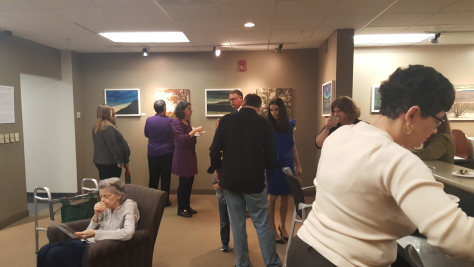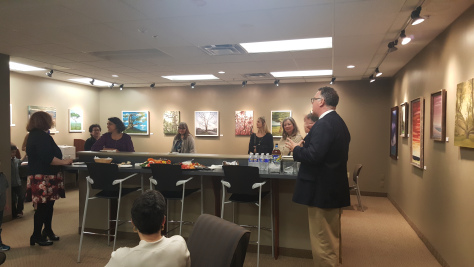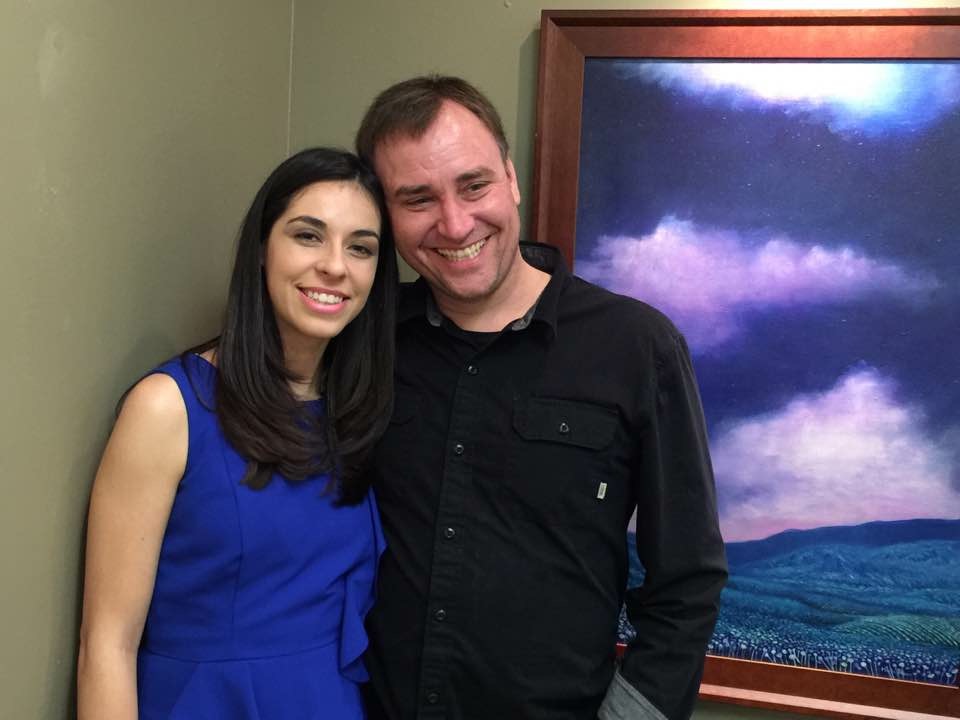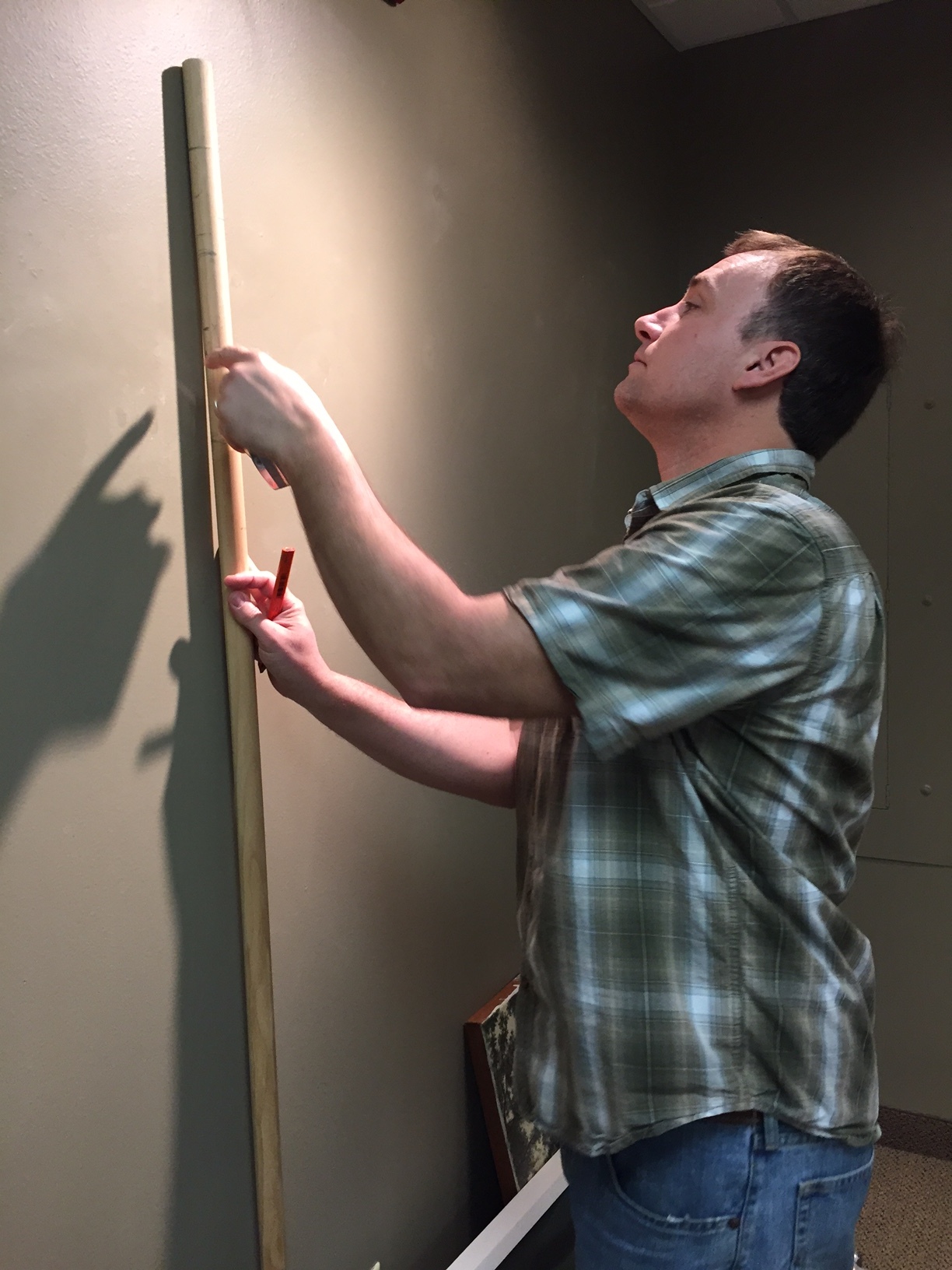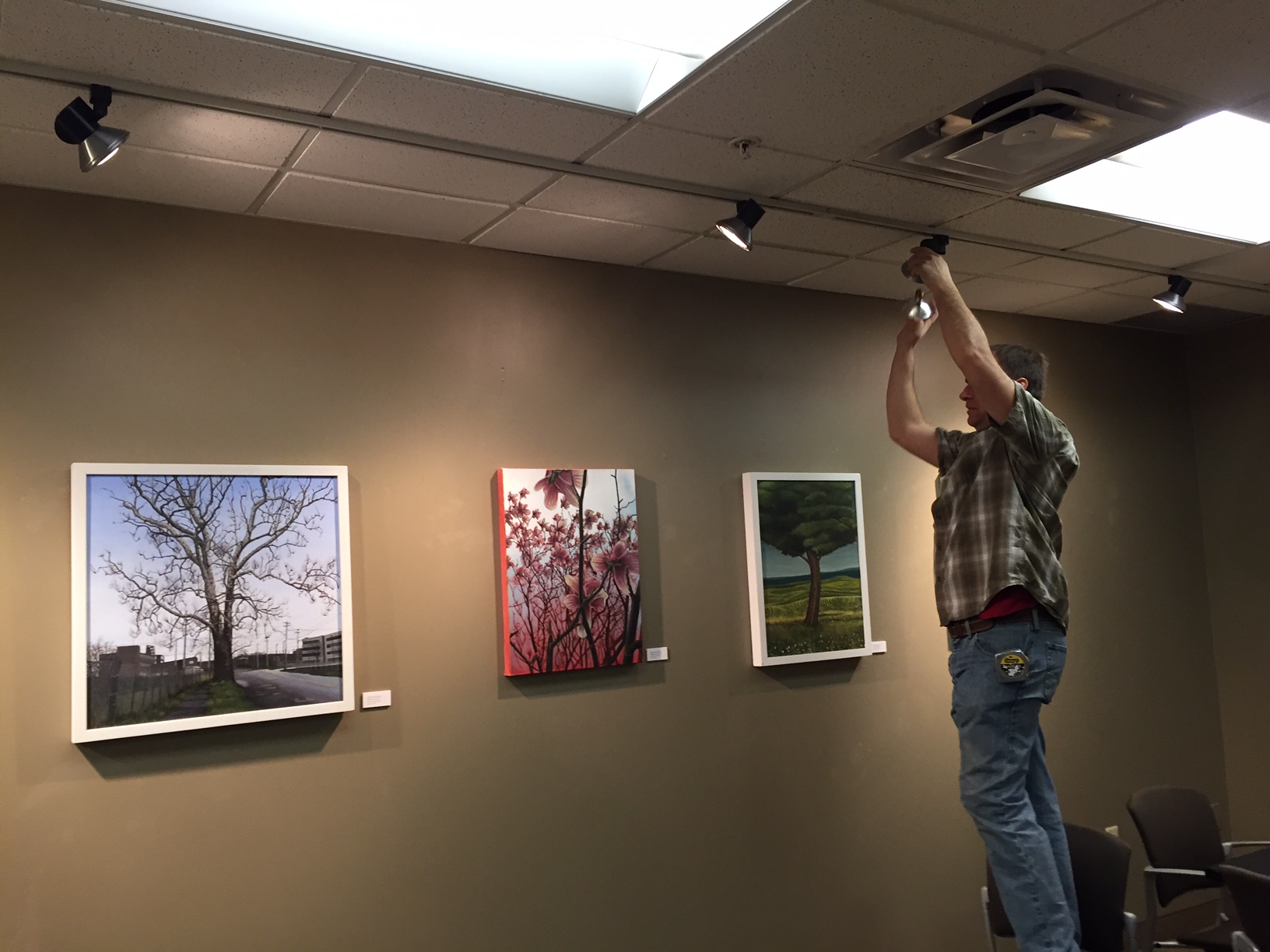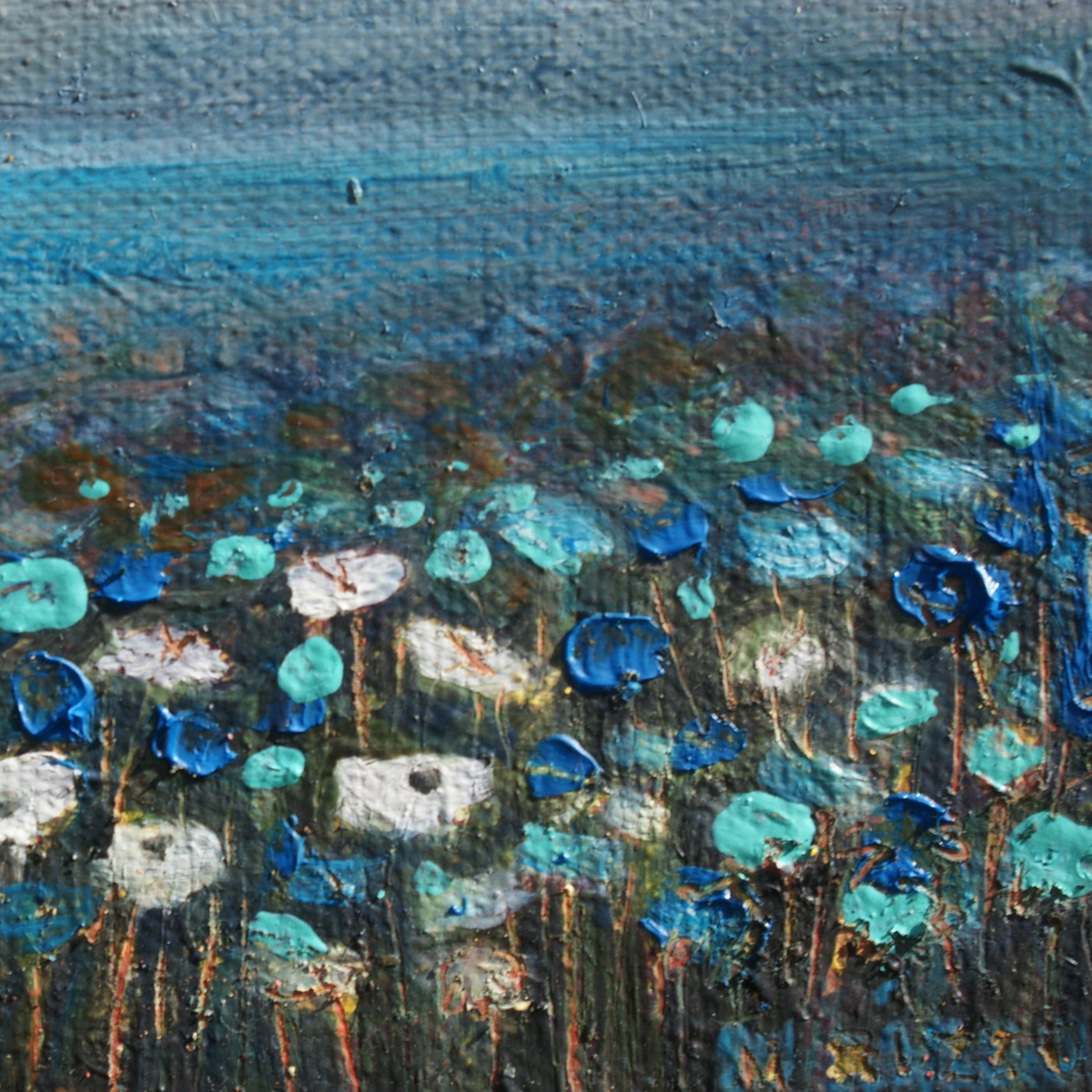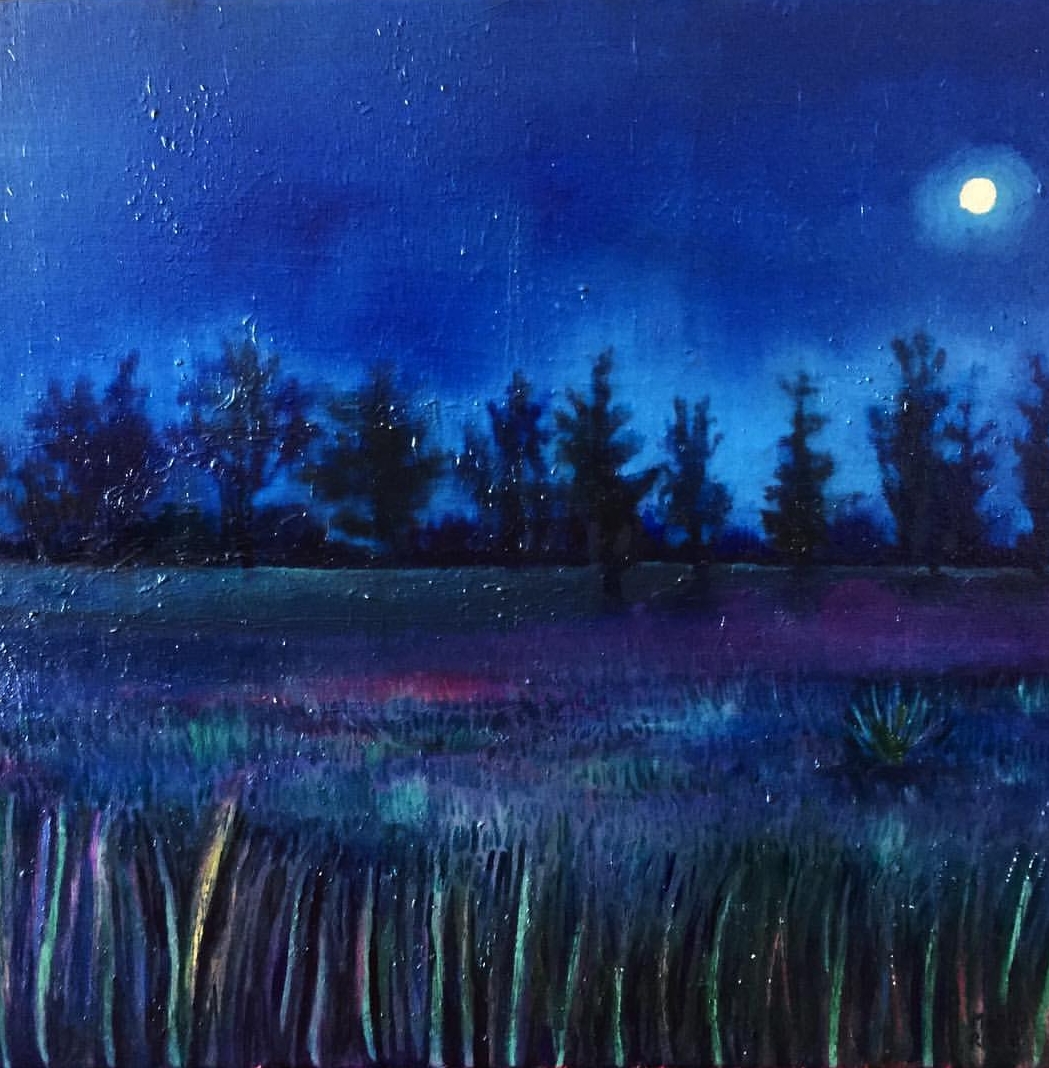How to plan for a successful art show and opening reception.
After an art opening it is a good habit for artists (give yourself a couple of days!) to examine what factors contributed to your opening's success and what things could have been done differently to make it better. Read more to discover tips on how to plan for a successful art show and opening reception.
My recent opening for Velatura was on Tuesday, April 4th at SUNY Empire State College in East Syracuse, NY, and to my delight, a lot of acquaintances, friends, and family showed up and enjoyed my art.
[A lot of photos were taken by my artist-friend, Karen who wrote a great post about this exhibit! To read her post click here!]
Yet, I believe that after an art opening it is good that every artist (give yourself a couple of days!) examines what factors contributed to the opening's success and what things could have been done differently to make it better. So....
What contributed to my art exhibit's good attendance?
1) Good planning, which included answering these 5 questions:
- Where are you going to show our art?
- When are you going to show your exhibit, and when are you having a reception for it?
- What art are you exhibiting? Is it a series or a retrospective of your work? Is it a solo show or a group show?
- Who are you hoping to reach out to with your art? Who is your target audience besides family and friends? I would recommend inviting art collectors, past clients, and journalists.
- Why are you exhibiting your art? Is it for sharing you passion with the world or for sharing your point of view on a social issue? Is it free and open to the public?
Selected paintings for Velatura: Creating Trees and places with Subtle Layers of Purples, Greens, and Blues.
2) Writing an artist statement specifically for my upcoming exhibition. For tips on how to write your artist statement read my blog post here.
3) Writing a press release which must be sent out to local news contacts at least 2 weeks before the reception. Check out this page on how to write an effective PR.
4) Designing and printing a postcard, or an invitation, to send out to your target audience, friends and family, a week before the opening. Plus, it's important to share the same visual design on social media to keep your brand consistent.
5) Hanging-up the art a couple of days before the opening. Make sure to ask for help from a friend or a partner. Things will move much faster!
6) At the reception make sure to bring:
- refreshments,
- business cards,
- and fine art prints of your work to sell, if it relates with your type of art.
- Also, don't forget to bring your phone or camera. Make sure to take a lot of pictures or ask a friend to document the night. These photos can be later used for promotional purposes!
Yet, there are three things that, if I could go back in time, I would have done differently.
1) I didn't give an artist talk, and that was a mistake because every time I explain my process, I share my passion with the people who enjoy my art or want to learn more. So, the learned lesson is: give an artist's talk every time you have an art show. It will give people an opportunity to further connect with you and your work.
2) I didn't have a e-mail sign-up sheet to collect emails for my arts newsletter, which is one of the most effective and cheapest ways to inform my fan base about upcoming events, promotions and so forth.
3) In addition, another technique I used in the past to draw a bigger crowd and make some money was to have a raffle of my work, I would either give away a framed print or an original painting and sell tickets from $2 to $5 depending on the value of my work.
Maria Rizzo gives an artist talk for her first group art show at The RedHouse Arts Center in 2010.
So yes, I wish I taught of that, too!
I'll make sure to read this blog post again before planning my next art show!!
Maria
VELATURA: An Exhibition and a New Art Collection
~ This April is going to be a special month. ~
The term velatura reflects my painting process, which consists of the fabrication, subtle layers upon layers of color, of dreamlike, and sometimes playful, realities.
My paintings are trees and nature scenes created as a response to those places that deeply resonate with me.
Although several paintings are copies from life; I adore creating art based from the real world yet vividly transformed by my infatuation for soothing colors like purples, greens, and blues.
I truly enjoy creating paintings that reflect my admiration for nature's creative force. With each brushstroke, I feel a connection with its whimsical energy.
~ This April is going to be a special month. ~
30 acrylic and oil paintings and sketches will be on view for Velatura: Creating Trees and Places with Subtle Layers of Purples, Greens, and Blues from April 1st to May 31st, 2017.
The opening reception will be held
on Tuesday, April 4, 2017
from 5:30pm to 7:30pm
at SUNY Empire State College
6333 Rte 298, 3rd floor
East Syracuse, NY (315-472-570)
Also, a new painting collection will be unveiled at Natur-Tyme, 3160 Erie Blvd. East, in DeWitt, NY, on April 1st! Here is a sneak peek preview:
I hope to see you at the opening reception. Come over and say hi, enjoy the refreshments, and celebrate with me five years of creativity, which is continually encouraged thanks to all of your amazing support.
Maria
How to Become a Happier (Fine) Artist
My big childhood dream was to become a professional fine artist – back then I had no concept of money; so, this dream came with no financial string attached. In 2009, I made the conscious decision to pursue my dream of becoming a professional artist, but, I made one big mistake. I decided that I needed to make money off my creativity.
My big childhood dream was to become a professional fine artist – back then I had no concept of money; so, this dream came with no financial string attached.
In 2009, I made the conscious decision to pursue my dream of becoming a professional artist, but, I made one big mistake. I decided that I needed to make money off my creativity.
This added expectation was the first step toward years of feeling unhappy as an artist. Every year, after doing my annual accounting, I felt like a failure because, no matter how much time I put into my art practice, I was not achieving the financial results I had hoped for.
The rule in business says you must create a product or a service to satisfy a need in the market; yet, I believe creatives find inspiration from within. When I started painting what I thought people would want, my art fell flat and I started experiencing several artist blocks.
Then I read Big Magic by Elisabeth Gilbert whose assertions gave me permission to think that as an artist, I should not expect to make money off my creativity. If it happens, great, but my life shouldn’t revolve around that goal. Artists should feel blessed that they have a talent and the courage to pursue their creative interests.
Elisabeth Gilbert, didn’t stop there, she also gave amazing advice on how artists can unblock their creativity. Gilbert agrees with Picasso who said that “inspiration exists, but it has to find us working,” yet, on top of carving time to be in the studio creating, she thinks that following our own curiosity, whatever that might be, is the secret for a life filled with continuous creative inspiration.
After reading Gilbert’s book, a giant weight was lifted from my shoulders. I felt free to be who I am without the pressure to make my bread and butter off my art. Although I do sell my paintings, prints, classes, etc., regularly, the amount I make every month doesn’t affect my self-worth as an artist because my attitude as shifted from a money-centered objective to the fulfillment of personal growth, which is one of my core values.
Looking back to the 7 years of painting and selling art and classes, my focus on making a living off my art was hiding the artistic and personal growth I was developing every year.
Color mixing in watercorol by Maria Rizzo.
That’s why artists that have another job are released by financial pressures, which is a burden that can undermine their creativity.
In conclusion, I believe that to become a happier (fine) artist, you need to make a long-term commitment to yourself to always carve out time for your art with a curious, experimental and free of judgement attitude.
As practice makes the master, I love how painter and fine art blogger, Lori McNee, answers people when asked “How long did it take to paint that?” She responds: “A lifetime, this painting took a lifetime to paint.”
Tips on How to Write an Effective Artist Statement
What I've realized, looking back to my 7 years running my creative business, is that my artist statement has been one of the most essential marketing tools I used to land opportunities to show my art, to win grants and awards, and to be published in articles and books. Click the link to learn how you can write a more effective artist statement.
If you are like me, you might have questioned why fine artists need an artist statement to show their art and, furthermore, you might wonder how do artists write an artist statement without sounding boring or uptight.
The Language of Trees at the Redhouse Art Center in Syracuse, NY, 2013. Curated by Marianne Dalton.
Yet, what I've realized, looking back to my 7 years running my creative business, is that my artist statement has been one of the most essential marketing tools I used to land opportunities to show my art, to win grants and awards, and to be published in articles and books.
Caroll Michell, the author of How to Survive and Prosper as an Artist, on the subject of the artist statement, writes:
An artist statement can be used as a tool to help dealers, art consultants, and advisors to sell your work, and as background information in helping writers, critics, and curators prepare articles, reviews, and exhibition catalogs. In addition, an artist statement can be incorporated into a cover letter..., on your Web site..., and into grant applications. (53)
Yet, Michell doesn't stop there as she gives some sound advice. The author writes:
An artist statement can focus on one or more topic, such as symbols and metaphors, materials and techniques, or themes or issues underlying or influencing your work. (53)
Maria Rizzo in front of the Onondaga Symbolic Tree, a community painting funded by the 2014 Individual Artist Grant from CNY Arts. Photo credits: Ray Trudell.
Another great piece of advice comes from Constance Smith, the author of Art Marketing 101. Smith asserts:
A correctly developed artist statement takes the reader to the heart of why you are an artist. It is a written dissertation of the idea behind your artwork, your personal philosophy -- the aim of your work. (139)
Here are some facts about the artist statement which I drew from Art Marketing 101:
It changes over time.
It's not the artist's life story.
It explains in words what the artist created in his or her art.
It is used by journalists, curators, art advisors, and art dealers to better understand the artist's work and to communicate his or her art philosophy to others.
It's used by the artist into as a copy for all his or her promotional materials.
It shouldn't be too long, a paragraph works.
It should be clear and simple.
- It should reflect your personality with the use of words that are meaningful to you.
Moody Trees II, oil on canvas by Maria Rizzo. Private Collector.
My artist statement has changed many times throughout the years. I have an upcoming senior exhibition scheduled for Tuesday, April 4, 2017 at SUNY Empire State College where I will showcase art I've created from 2012 to present so, I had to rewrite a new artist statement to better reflect my creative drive throughout the years. For marketing convenience, I also decided to write a longer artist statement for the art exhibition and a shorter one to use on all my promotional materials.
ARTIST STATEMENT
These paintings are trees and nature scenes created as a response to those places which deeply resonate with me. Although several paintings are copies from life; I adore creating art based from the real world but vividly transformed by my infatuation for soothing colors like purples, greens, and blues. I truly enjoy creating paintings that reflect my admiration for nature's creative force. With each brushstroke, I feel a connection with its whimsical energy.
My approach to painting depends on the complexity of the subject. For example, when I create paintings based from life, I make a pencil sketch first, which I transfer on canvas. Next, I use a monochromatic pittura del fondo to establish the chiaro scuro: the light and dark values of the composition. Once the underpainting is finished, I add the velatura, glazes of color, that add to the realism of the painting. When I paint evocative nature scenes, I play with blue-brown washes and bold, bright marks which slowly morph into a suggestive landscape. This creative process begins with a dynamic abstraction and ends into a believable, yet personal, reality.
Like sailing, my creativity is fueled by dedication and perseverance; yet, it is curiosity that allows me to explore its vastness, and grow as an artist.
SHORT ARTIST STATEMENT
My paintings are peculiar trees and evocative nature scenes created as a response to those places which beauty deeply resonated with me. Although several paintings are copies from life; I adore creating art which might be based from the real world but then is vividly transformed by my infatuation for evocative, yet soothing, colors like purples, greens, and blues. I truly enjoy creating paintings that reflect my admiration for nature's creative force as, with each brushstroke, I feel a connection with its whimsical energy. Throughout my creative journey, my drive to paint comes from a desire to express the devotion I feel for nature and my relationship to it.
I hope this blog post will inspire you to write or update your artist statement!
Until next time,
Maria R.
MARIA RIZZO
Trees, Lands & Dreams | Art Blogger #theartistspath | Art Educator | From Italy 🇮🇹🇺🇸 |



